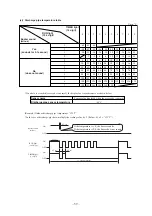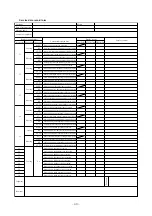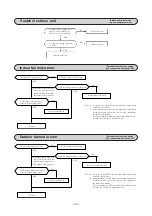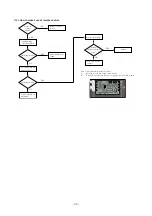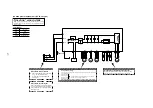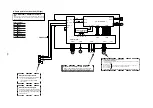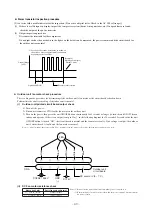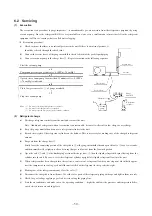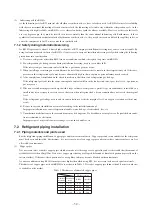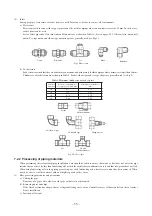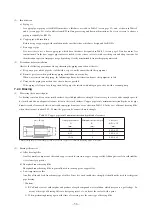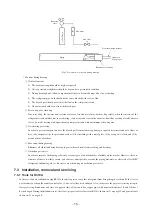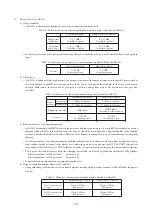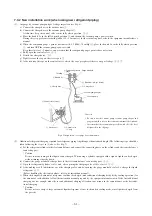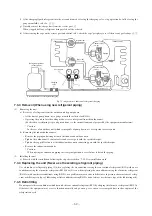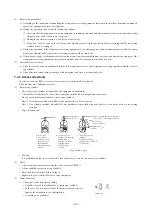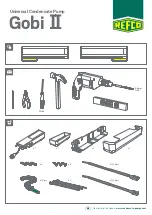
-
52
-
(3)
Lubricating oils for R410A
As the lubricating oils for R22, mineral oils, alkylbenze synthetic oils, etc. have so far been used. As R410A features less solubility
with these conventional lubricating oils such as mineral oils, the lubricating oils tend to stay within the refrigeration cycle. As the
lubricating oils highly soluble with R410A, ester, ethereal and other synthetic oils are available. However, as these synthetic oils
are very hygroscopic, they must be treated even more carefully than the conventional lubricating oils. Furthermore, if these
synthetic oils are mixed with mineral oils, alkylbenzene synthetic oils, etc., they may deteriorate, and block the capillary tubes, or
cause the compressor to fail. So, never mix these synthetic oils.
7.1.2 Safety during installation/servicing
As R410A’s pressure is about 1.6 times higher than that of R22, improper installation/servicing may cause a serious trouble. By
using tools and materials exclusive for R410A, it is necessary to carry out installation/servicing safely while taking the following
precautions into consideration.
1) Never use refrigerant other than R410A in an air conditioner which is designed to operate with R410A.
2) If a refrigeration gas leakage occurs during installation/servicing, be sure to ventilate fully.
If the refrigerant gas comes into contact with fire, a poisonous gas may occur.
3) When installing or removing an air conditioner, do not allow air or moisture to remain in the refrigeration cycle. Otherwise,
pressure in the refrigeration cycle may become abnormally high so that a rupture or personal injury may be caused.
4) After completion of installation work, check to make sure that there is no refrigeration gas leakage.
If the refrigerant gas leaks into the room, coming into contact with fire in the fan driven heater, space heater, etc., a poisonous
gas may occur.
5) When an air conditioning system charged with a large volume of refrigerant (e.g.multi type air conditioner) is installed in a
small room, it is necessary to exercise care so that, even when refrigerant leaks, its concentration does not exceed the marginal
level.
If the refrigerant gas leakage occurs and its concentration exceeds the marginal level, an oxygen starvation accident may
result.
6) Be sure to carry out installation or removal according to the installation manual.
Improper installation may cause refrigeration trouble, water leakage, electric shock, fire, etc.
7) Unauthorized modifications to the air conditioner may be dangerous. If a breakdown occurs please call a qualified air condi-
tioner technician or electrician.
Improper repair’s may result in water leakage, electric shock and fire, etc.
7.2 Refrigerant piping installation
7.2.1 Piping materials and joints used
For the refrigerant piping installation, copper pipes and joints are mainly used. Copper pipes and joints suitable for the refrigerant
must be chosen and installed. Furthermore, it is necessary to use clean copper pipes and joints whose interior surfaces are less
affected by contaminants.
(1)
Copper pipes
It is necessary to use seamless copper pipes which are made of either copper or copper alloy and it is desirable that the amount of
residual oil is less than 40 mg/10m. Do not use copper pipes having a collapsed, deformed or discolored portion (especially on the
interior surface). Otherwise, the expansion valve or capillary tube may become blocked with contaminants.
As an air conditioner using R410A incurs pressure higher than when using R22, it is necessary to choose adequate materials.
Thicknesses of copper pipes used with R410A are as shown in Table 3. Never use copper pipes thinner than 0.8 mm even when it
is available on the market.
Thickness (mm)
Nominal Outer diameter
R410A
[ref.] R22
diameter
(mm)
1/4
6.35
0.80
0.80
3/8
9.52
0.80
0.80
1/2
12.70
0.80
0.80
5/8
15.88
1.00
1.00
Table 3. Thicknesses of annealed copper pipes


